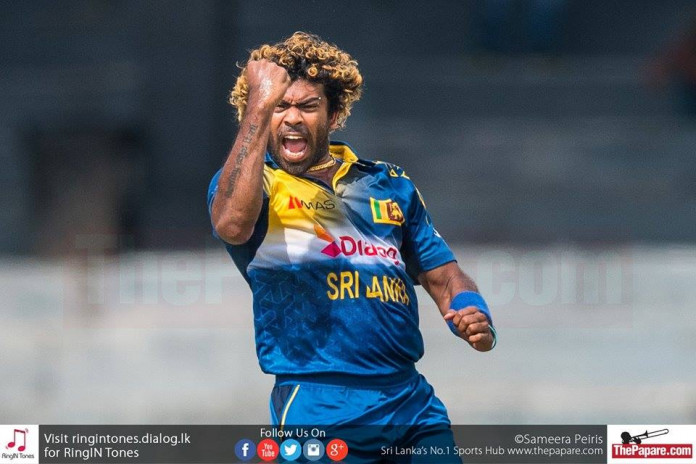Separamadu Lasith Malinga: Slinger, fast bowler, millionaire, mercenary, riff-raff. This is how most of Sri Lanka know him. Because that is how the media show him. In the social-media era, where Facebook and Twitter bring news to our news feed, one cannot expect netizens to use Google to know the truth. The gift-wrapped information, no matter how authentic it is, brought to us by the media and social media is consumed by all and sundry without discretion.
None venture to dissect and research the information in Google, for that needs some effort from the reader’s side. Perhaps, had Sri Lankans done a scintilla of research online, we could have conceived a better image of Lasith Malinga
Tucked in a corner of Sri Lanka is the village of Rathgama. It sits along the Southern coastal belt of Sri Lanka that is known for having produced some of Sri Lanka’s Cinderellas in cricket.
The Southern coastal villages in Sri Lanka have always had an enigmatic routine of producing legends from rubbles. Madol Doova, a well-received adventure novel about a stranded boy from a village in the south of Sri Lanka, written by a man who was a Southerner himself, perhaps could be considered as an allegory to many a heroes who would hail from the South of Sri Lanka. Malinga’s career is no less adventurous than the story of Upali, the protagonist of Madol Doova.
A raw homespun talent
It was in this village Malinga learned to play his cricket. He played cricket in the beaches. When he was bored, he played cricket in the palm grooves. Cauterized tennis ball was his weapon. Crushing toes and breaking noses was his day job. During his free time, he bowled at shoes.
He bowled when the sun scorched; he bowled when it rained; he bowled when storms were brewing in the Indian Ocean; he bowled when it thundered; he bowled when the monsoons caterwauled from the South West. He was his hero. He was his villain. He was his coach, mentor, philosopher and trainer. His village was his gymnasium. He swam across the river to his aunt’s home in the morning. That was his fitness session. He climbed coconut trees in the afternoons. That was his strength and conditioning session. He drank the juice the king coconut trees produced in their fruits. That was his energy drink.
Unlike the incubated fast bowling babies that emerge from the schools, who train in gyms, ball in the nets, bend their backs for a few overs during the matches since opening with a fast bowler is a formality, cramp one of their muscles and then spend the rest of their season in the benches, Malinga was a product of straining the human body to its utmost limits. He was a masochist who loved pain. His body braved the scorching sun, the chilly rains and the bellowing monsoons. No pain could keep him out for there was only one thing that he loved in his life- that was bowling fast at batsmen’s toes.
No media in Sri Lanka bothered to remark about his behavior or character, nor did they took the pain of prying into how much he earns annually then. No one really cared whether or not he goes to the temple regularly, nor did they worry about how he was dressed or what color his hair was dyed in.
Even when Chamapaka Ramanayake spotted him and brought him into the national setup no one batted an eye. No one was ready to listen to the story of this village boy with an unusual action who was barred from bowling at national batsmen in the nets for the fear of losing some of their top batsmen inside practice nets. The media was tight lipped when Malinga bounced Darren Lehman and sent him trudging home in disbelief.
Those that would later host special panels specifically to lampoon Malinga were unaware when Adam Gilchrist walked into the Sri Lankan dressing room with a stump in his hand exclaiming “This is for that boy Malinga.” Who would want to know or speak about a boy from a coastal village, who had nothing to eat, nowhere to stay, nowhere to go but to his village home?
The devil-may-care demeanour
Malinga grew up being his own master. There was no one whom he was answerable to. He had his own morals; his own virtues. In a century when village boys are exploited and intrigued into anti-social activities by the over-fed city dwellers, his morals must have been meticulous and strong-willed to have placed him where he is now.
He spoke straight, straight from his heart. It was wrong, if he thought it was wrong. He was not going belie his conscience and silently nod in acceptance, so that the society would accept him, for there was no society that was ready to accept a semi-educated village lad anyway. He never minced words to save his good-boy image, since none really imputed a good-boy identity to a ruffian teen from a rural village.
The sports pages never carried his name because he didn’t play cricket for a famous school. His selection into the team never hit headlines, because his father had not played for Sri Lanka. He made his debut in silence. He bounced batsman out in silence. He yorked stumps and cartwheeled them in silence.
A few matches into his career, Malinga started sporting a blonde, overgrown, curly and unkempt hairstyle that would eventually become his identity in world cricket along with his toe-crushers. The conformists didn’t like it. Sri Lanka is a country that treats well-dressed high-profile crooks with respect and spurns disheveled labours who sweat their blood in the sun to break even. Very recently, a firm rejected a candidate for sporting a crease in the shirt that he wore in his profile photo.
Malinga’s boorish hairstyle, rings that garnished his brows, the rubber bracelets around his wrists and the tattoos that festooned his arms made the sanctimonious culturists portray him as a rogue while the real rogues were partying within the administration of Sri Lanka Cricket wearing suites.
“One top official of Sri Lanka Cricket advised me to change my hair style as well as remove the pierced rings from my eyebrows”, the Slinger said in an interview. The discipline was questioned for an innately disciplined guy would accept everything with acquiescence and pliantly accept all manipulations.
Questioning authority
It must be noted that Malinga was not the only one who defied to conform to the whims and fancies of the power mongrels. Kumar Sangakkara and Mahela Jayawardene too protested the wrongdoings of the administrators. But they diplomatically chose the right time to chastise the board officials and whenever they did so, they mostly did it in English. The colonial mindset of the Sri Lankan bourgeois still regard profanities in English more upright than honeyed words in the local languages and with such a context, it is no wonder that Malinga, who voiced his concerns in Sinhalese, was vilified.
And Malinga was never diplomatic. He was a cactus flower who was roughened by his native ambiance. He spoke straight. He held no bars when he believed he was prejudiced. He didn’t muffle words to speak at the right time. He dared to question the highest strata of hierarchy and never shied to spit barbs at corrupt moguls. This made Malinga the perfect target for the rumor mills and gossip journalism.
“Some people have said that I have a bad record with my discipline. But I don’t know what I have done wrong. I challenge anyone to give reasons for my bad discipline… I told him that I do not agree with his views and it was my personal choice. I don’t know why they question me about my personal appearance. It has never affected my game at all.
“When I go to the ground I always work hard and give more than 100 percent. My main aim is to get wickets. My captain or any other team member or the team management has never complained about my appearance or hair style”, Malinga lamented in 2008. What more a man can do when he is judged by the color of his hair and not by the content of his character?
When he fell 4 wickets in successive balls against South Africa in 2007 the world took him on his shoulders to celebrate the rare accomplishment. While his homeland chided his looks, the world voted him as the sexiest cricketer in the 2007 world cup. Malinga’s sudden rise to world fame became an added motive for the media. They carped about him more and people gossiped about him more.
The career threatening injury
In 2008 during the CB series in Australia, Malinga injures his knee. What was supposed to be a swollen knee bone, becomes career threatening. Malinga sits out of the team for months and he is denied a contract. The “ugly duckling” is once again jobless, penniless and future-less. Who would want to know or speak about a boy from a coastal village, who has nothing to eat, nowhere to stay, nowhere to go but to his village home? The media shuns him, or to put it more appropriately relieves him. And people forget him. Sri Lanka is no more bothered about the color of his hair or the rings in his brows.
The injury becomes incurable. “The joint in my knee seemed to be rubbing together radiating pain. I was unable to walk, let alone run. I was unable to climb the stairs”. None cared, for there was Chaminda Vass and Muttiah Muralitharan in the team. Who needed a Malinga? Mr. Expendable’s hopes dwindled. “I was getting ready to bow out of the game, from the field and from the love of my life – cricket.”
The felons within the administration who could not tame the lion, now found the perfect opportunity to avenge the wounded lion. His contract was cancelled while Farveez Maharoof who was nursing a similar injury was awarded one.
A forsaken soul
Medicines despaired him. The administration avenged him. The nation forgot him. The only option that was left for him was to go back to his village, his river, his beach and his grove- the only places on earth that loved him unconditionally. His bank balance was dwindling. His roller coaster ride was now plummeting. Cricket begins and fades like a dream in the youngster’s life.
Life tests good men but never forsakes them. Enter the first edition of IPL. Malinga had secured a contract with Mumbai Indians before his injury and that finances him. The country gives him up but not Mumbai Indians.
By this time, he gets a call from the then president of Sri Lanka. He requests him to meet him at his official residence. When Malinga visits him, the president’s personal physician, Dr. Eliyantha White, promises Malinga to cure him in four days. The supernatural doctor uses herbs and black magic to cure illnesses and Malinga’s knee becomes better in four days, as promised. Fairytale in real life? Yes! The wounded lion was running and roaring again.
But yet, the agenda against him is not over. The selectors ask him to prove himself in the domestic circuit. He responds with 8 wickets in two games in the premier limited overs tournament. Still, there were enough excuses to keep him at bay.
IPL’s helping arm
Once again the Indian Premiere League rescues him. Malinga plays for Mumbai and picks up 18 wickets in the 2009 season. Suddenly people recall Malinga’s name. The fandom questions his exclusion. He gets picked for the WT20 in 2009 and almost wins the title for his team.
The same year sees Vass being excluded from the national team and Malinga becomes the automatic successor. Once again batsmen hop and jump to evade his bouncers and prostrate while digging out his Yorkers. The rock star is on song once more. The gun slinger is famous again and the news mills begin their quotidian job. The country once again becomes obsessed about his hair color. Malinga has money. Malinga is famous. Malinga has a villa. So people gossip.
After spending almost a year playing shorter formats, Malinga tries to make a test comeback, his comeback game being Murali’s last. He picks up eight wickets and becomes the man of Murali’s farewell match. But his knee injury relapses.
Malinga misses the second test against India and plays the third. But on the crucial fifth day, he is unable to bowl and India romps home. He sits out of the test series against the West Indies.
At this juncture, Malinga realizes that his injury cannot be healed completely but can be managed properly. He could continue to play shorter formats but playing tests can truncate his career. Bowling 20 overs in a test is improbable, let alone playing successive tests.
In 2011 comes another cricket world cup and Malinga picks up yet another hat-trick. In the final he sends Sachin and Sehwag packing home within the first ten overs and takes Sri Lanka millimeters close to the world cup trophy, but that was the closest his team could get on that heart-wrenching day.
Retirement from tests
IPL follows the world cup and a tour of England overlaps IPL. The new batch of selectors headed by Duleep Mendis pick Malinga for the tests against England and Malinga withdraws citing his ailing knee. Duleep Mendis issues an ultimatum forcing Malinga to return from IPL, midway, to take part in a medical-rehabilitation program.
What irony? Just three years ago the same man was denied a contract and any access to medical services offered to contracted cricketers, when he most needed them. Now the same rehabilitation program is being forced on him, while he least expects.
“I can’t play tests but will continue to play limited overs cricket”, says Malinga. “How can you not play tests but play in the IPL”, ask the selectors. Malinga retires from test cricket as a response.
The rumor mills begin spinning once again. Malinga becomes Money-linga. At this point there were two kinds of journalists in Sri Lanka. The ones who criticized the tyrannical regime and died, and the others who pried into the private lives of celebrities and filled their gossip publications with news. The media tells people that Malinga quit test for money and people believe it. For Sri Lankans, anything in a tabloid with colorful headings is credible.
Both Sangakkara and Mahela Jayawardene skip the practice fixtures to honour their IPL agreements and painstakingly struggle in the first test, but no one notices. Malinga retires from tests and plays in the IPL and that was the thorn in the flesh for many Sri Lankans.
Media’s conspiracy
Oil price sky rocketed. Gas cylinders became a luxury. Electricity bill amount exceeded the allocated space. Journalists were assassinated. But people were worried about how much Malinga earns annually as a famous daily published his annual wherewithal. People who never cared about Malinga’s finances when he was recuperating in 2008, people who never prepared their own home budget, were now busy twiddling their calculators to know how much Malinga makes.
Malinga is offered a top-category contract that would yield him $100,000 but he is made eligible only for 40% of it since he no more plays tests. Playing for Mumbai alone earns Malinga 1.1 million US dollars. Many Sri Lankan graduates leave the island seeking better jobs overseas but Malinga’s commitment with Mumbai Indians was received with contempt by the hypocritical populace.
In 2013, the media swarms Malinga before a meeting on the contract issue. Incensed Malinga lashes out at the journalists uttering “Have you not seen me before? Move away!” An innocuous dirge is portrayed as an expletive by the media and an apology is demanded.
In 2014, midway through the WorldT20 tournament Malinga is made the captain. The self-effacing veteran altruistically allows Mahela Jayawardene to set the field and even asks Mahela where he should be standing. The media trolls him. Social media makes a mockery of him. However, many fail to notice Malinga’s selflessness and genuineness. Many teams in the history have been splintered by too many leaders within the side but Malinga ensured that the right leader took charge while he happily relegated himself.
Though the WorldT20 victory helps Malinga restore his image among the public, the media continues its lambasting. Stories about a rift between the then bowling coach Chaminda Vass and Lasith Malinga are coined by the newspapers but Vass denies all allegations.
Injury impedes him once again and Malinga undergoes an ankle surgery during the latter part of 2014. He makes a comeback barely before the commencement of the 2015 world cup, but instead of eulogizing Malinga for playing amidst pain, everyone chatters about his bulging tummy.
Coach Marvan Atapattu even goes to the extent of blaming Malinga’s lack of fitness for successive match defeats after the world cup but never pays heed to his recovering ankle. Against Pakistan, Malinga drops Chandimal from the T20 squad and the outgoing selector Pramodaya Wickramasinghe tells the media that “Malinga was gunning for Chandimal”. By dropping Chandimal, Malinga finds two assured strikers, in Chamara Kapugedera and Shehan Jayasuriya, but no one says a word about it.
Malinga struggles with his form during this period and offers a harsh self-criticism. “The selectors have the opportunity to give the captaincy to someone else. Whether I’m captain or not, I think I’ll have a chance to get back into form. If not, a better captain and a better bowler will replace me, and take Sri Lanka’s cricket forward.”
Against West Indies, Malinga returns with an almost flat abdomen and sears Yorkers at around 140 kmph. Despite having bowled well against the Caribbeans, Malinga delivers a realistic appraisal about his performance saying that he is not yet fully fit. However, the media claims that Malinga was not wearing the yellow arm band that was supposed to be worn to mourn the death of an eminent monk in Sri Lanka. But pictures from the match shows the presence of the arm band in Malinga’s arm.
The collusion against Malinga is least likely to cease. But any sane fan would be ready to vouch for the fact that Malinga is definitely one of the most passionate and dedicated cricketers in Sri Lanka. Unlike some of the respected former cricketers, he didn’t marry twice or thrice, nor did he court women when abroad. He didn’t declare his support for a politician to gain mileage in his cricket career like certain players did within the team.
Playing cricket is all what he does; it is all what he knows. He doesn’t smoke. He doesn’t consume alcohol. He hates partying. But hey! His hair style, though. Sri Lanka has not cherished Malinga’s phenomenal accomplishments. They have not recognized his imperative service to Sri Lanka cricket. But they might yet be able to do so, but only if they venture to read between the lines!

















